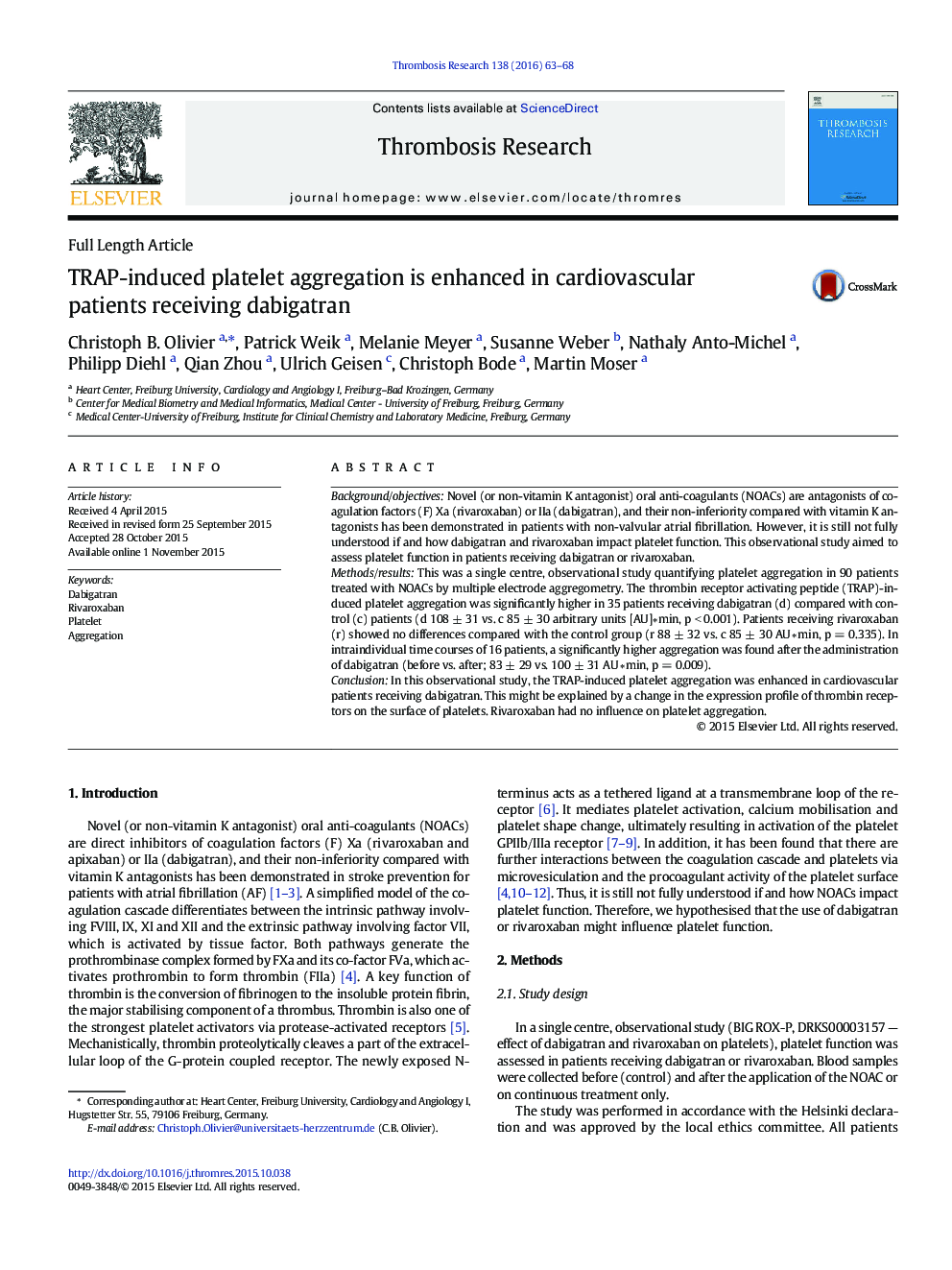| Article ID | Journal | Published Year | Pages | File Type |
|---|---|---|---|---|
| 6000665 | Thrombosis Research | 2016 | 6 Pages |
â¢It is still not fully understood if and how NOACs impact platelet function.â¢In a single centre observational study platelet aggregation was quantified.â¢TRAP-induced aggregation was enhanced in patients receiving dabigatran.â¢This might be explained by a change in the expression profile of thrombin receptors on the surface of platelets.â¢Rivaroxaban had no influence on platelet aggregation.
Background/objectivesNovel (or non-vitamin K antagonist) oral anti-coagulants (NOACs) are antagonists of coagulation factors (F) Xa (rivaroxaban) or IIa (dabigatran), and their non-inferiority compared with vitamin K antagonists has been demonstrated in patients with non-valvular atrial fibrillation. However, it is still not fully understood if and how dabigatran and rivaroxaban impact platelet function. This observational study aimed to assess platelet function in patients receiving dabigatran or rivaroxaban.Methods/resultsThis was a single centre, observational study quantifying platelet aggregation in 90 patients treated with NOACs by multiple electrode aggregometry. The thrombin receptor activating peptide (TRAP)-induced platelet aggregation was significantly higher in 35 patients receiving dabigatran (d) compared with control (c) patients (d 108 ± 31 vs. c 85 ± 30 arbitrary units [AU]â min, p < 0.001). Patients receiving rivaroxaban (r) showed no differences compared with the control group (r 88 ± 32 vs. c 85 ± 30 AU â min, p = 0.335). In intraindividual time courses of 16 patients, a significantly higher aggregation was found after the administration of dabigatran (before vs. after; 83 ± 29 vs. 100 ± 31 AU â min, p = 0.009).ConclusionIn this observational study, the TRAP-induced platelet aggregation was enhanced in cardiovascular patients receiving dabigatran. This might be explained by a change in the expression profile of thrombin receptors on the surface of platelets. Rivaroxaban had no influence on platelet aggregation.
